- 공주한옥마을
I usually turn on the news while getting ready for work every morning.
Right before the weather forecast at the end of the news, a short video of about 20 secondsis shown.
There are many programs that introduce various parts of Korea, but I think many people might not know about this segment of the news, so I'm introducing it to you.
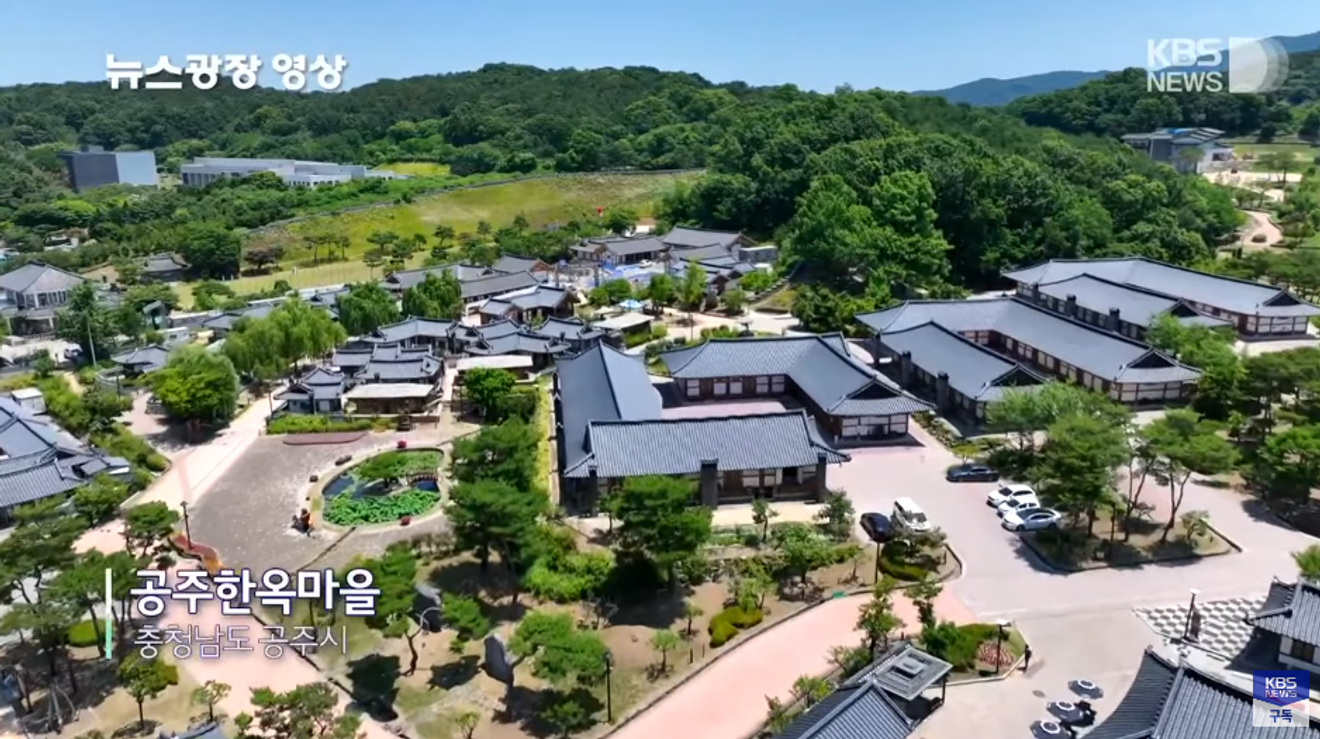
Source: KBS
Gongju Hanok Village
A place where you can spend a night in a hanok (traditional Korean house) that exudes the atmosphere of the Baekje Dynasty.
Built with pine and fir trees, this new hanok offers a traditional Korean Ondol (floor heating) experience, making it
convenient for modern people to stay.
It's a fantastic place for family trips, school excursions, and workshops for organizations and groups, offering both sightseeing and relaxation.
You can also experience traditional cultural activities and learn about Baekje culture.
You can stroll through the rest areas scattered throughout the Hanok Village, take a walk along the Hanok Village trail, or rent a bicycle and
encounter the small town and historical relics of the ancient capital. (Source: Korea Tourism Organization)
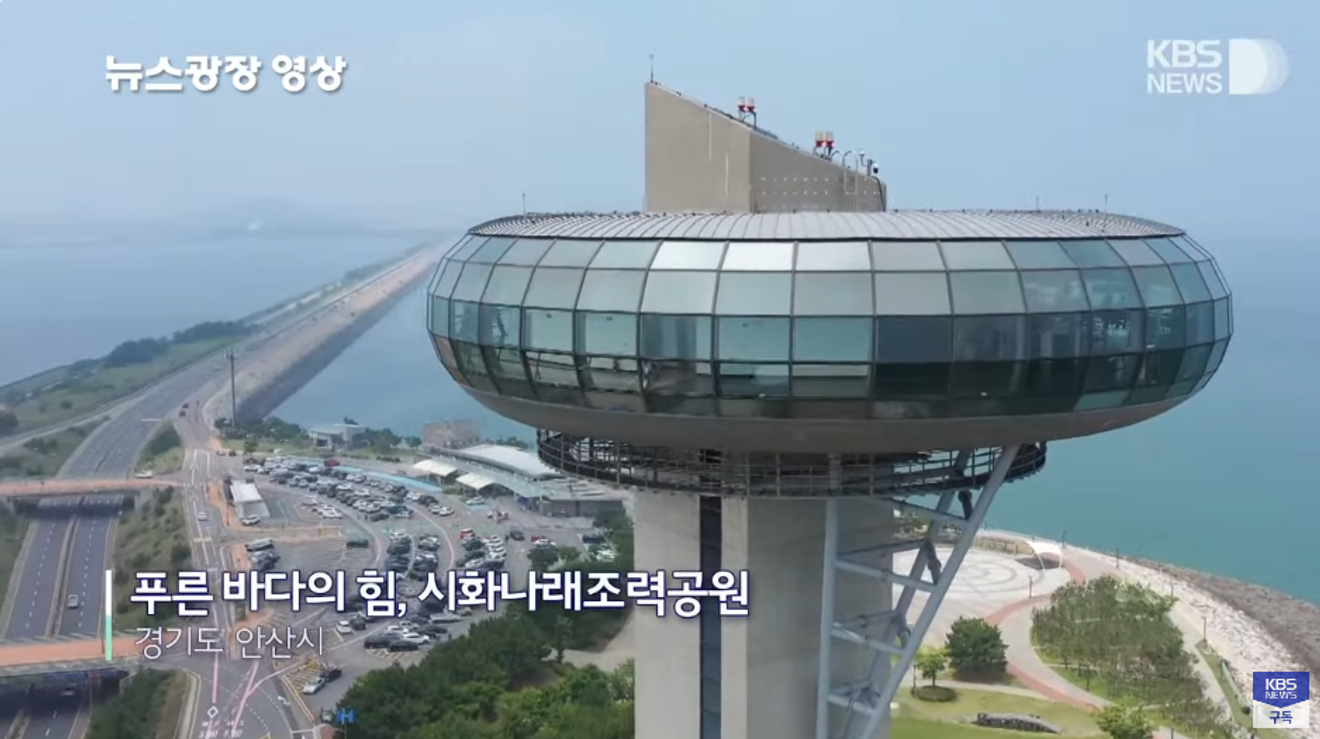
Source: KBS
Sihwa Narae Tidal Power Plant Park
A marine park symbolizing light, created using the seawater of Daebudo Island, located in the middle of the Sihwa embankment.
Themed on the waves of the West Sea and the cycle of renewable energy, it was created in an eco-friendly manner using the soil generated during the construction of the tidal power plant.
The park is divided into leisure, rest, and convenience areas.
It features sluice gates, power plants, control buildings, a tidal power cultural center, a moon observatory, a story walking path, a lawn, the obelisk of light,
wave sound rest areas, rest stops, ocean stairs, the first parking lot, the second parking lot, and the third parking lot.
It's worth visiting on your way to Daebudo, Jebu Island, or Yeongheung Island. (Source: Korea Tourism Organization)
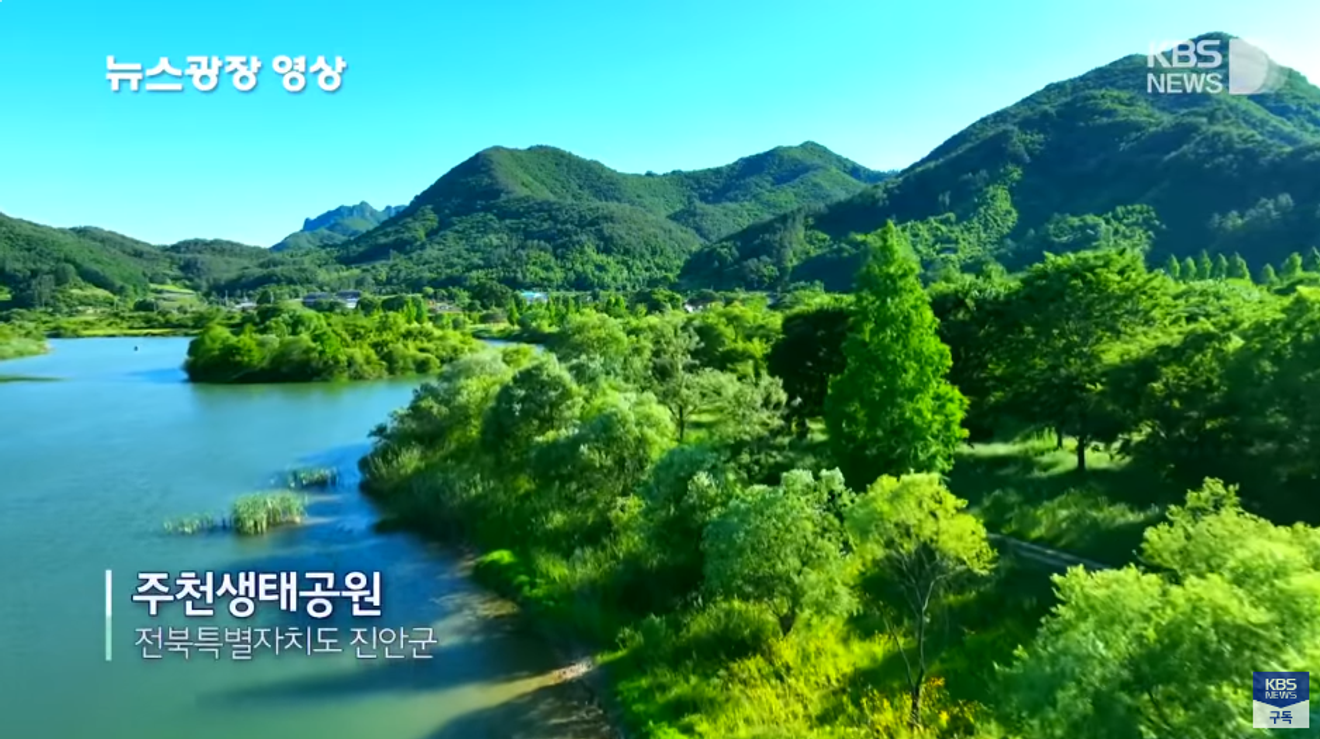
Source: KBS
Jucheon Ecological Park
A park built around Bongsom Village in Jinan-gun, situated at the lower reaches of Juja Stream, which flows into Yongdam Lake.
In spring, the park is filled with blooming Coreopsis flowers, creating a spectacular sight. In autumn, it's renowned for its beautiful scenery of morning mist and autumn foliage.
Aquatic plants grow in clusters, and various wildflowers bloom throughout the seasons, attracting
many photographers.
In particular, the landscape of Jucheon Ecological Park, with its lake and trees, is so picturesque that the reflection in the water looks like a painting,
inspiring awe in many visitors.
It's a great place for a relaxing stroll, offering various attractions such as cluster plantings, an aquatic plant garden, and a wildflower garden.
Nearby attractions include Dakbatgol, Okcheonam Temple, and Waryongam Temple. (Source: Korea Tourism Organization)
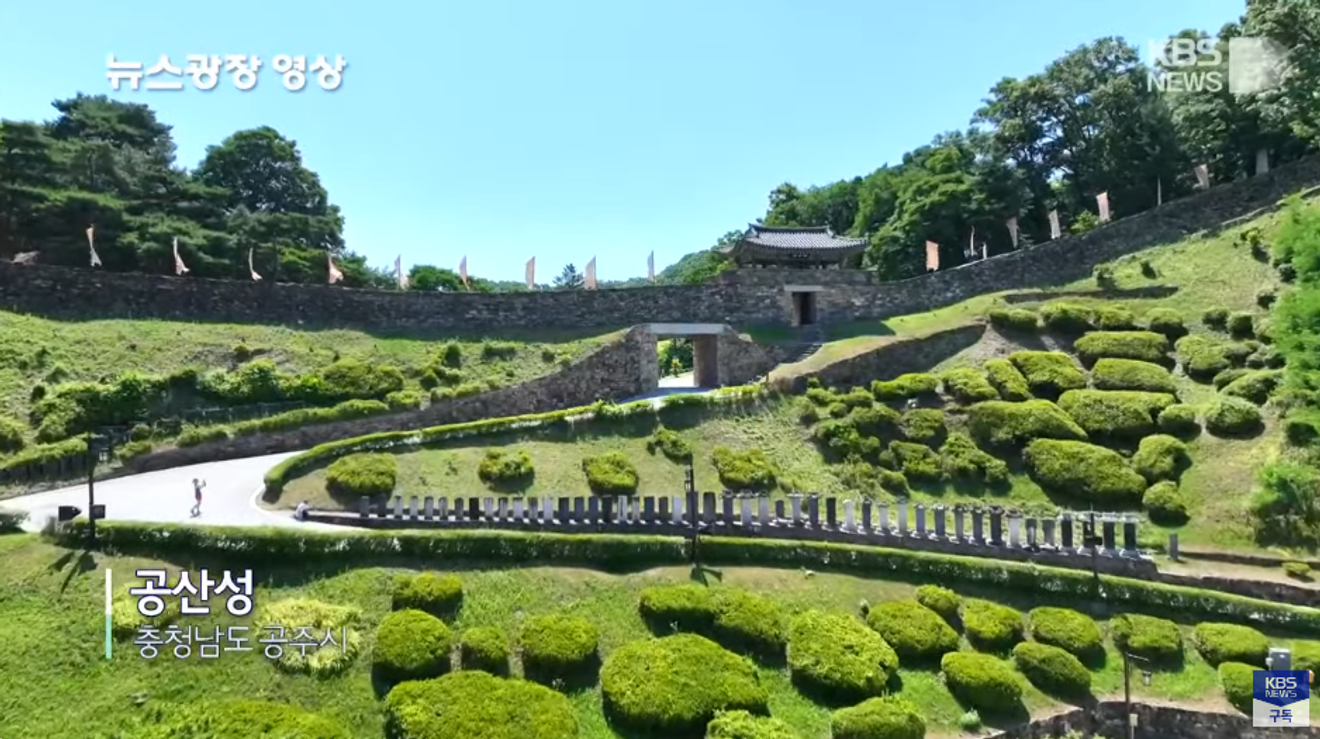
Source: KBS
Gongsanseong Fortress
A UNESCO World Heritage site.
A representative fortress from the Baekje period, it's a mountain fortress that protected Gongju when it was the capital of Baekje.
It served as the capital of Baekje until King Seong moved the capital to Buyeo in 538, during the 16th year of his reign.
Subsequently, it remained a central hub for local administration during the Joseon Dynasty, making it a significant historical site of great value.
It's a circumvallation-type mountain fortress surrounding the valley of a mountain near the Geum River. Initially, it was an earthen fortress (toseong),
but it was rebuilt as a stone fortress (seoksung) during the Joseon Dynasty.
The exact date of its construction is uncertain. During the Baekje period, it was known as Ungjinseong, and during the Goryeo Dynasty, it was called Gongjusanseong or Gongsanseong.
After King Injo took refuge there following the Igwol's Rebellion (1623), it was referred to as Sangsusanseong.
It has a rectangular shape, approximately 800m east-west and 400m north-south.
There are gate sites in four directions, with Jinnamru (South Gate) and Gongbukru (North Gate) still remaining.
The East Gate and West Gate were reduced to ruins, but in 993, Yeongdongru was rebuilt at the East Gate site and Geumseoru at the West Gate site.
Numerous artifacts have been unearthed, including lotus-patterned roof tiles, Baekje tiles, earthenware, and relics from the Goryeo and Joseon Dynasties.
Walking along the fortress wall offers a panoramic view of Gongju city.
During the Baekje Cultural Festival, a temporary bridge is built from in front of Gongsanseong Fortress to Geumgang Singwan Park.
At Geumseoru, you can witness the majestic grandeur of the Baekje Kingdom through the "Ungjinseong Guard Changing Ceremony," and
at Geumgang Singwan Park, you can admire the beautiful night view of Gongsanseong Fortress. (Source: Korea Tourism Organization)
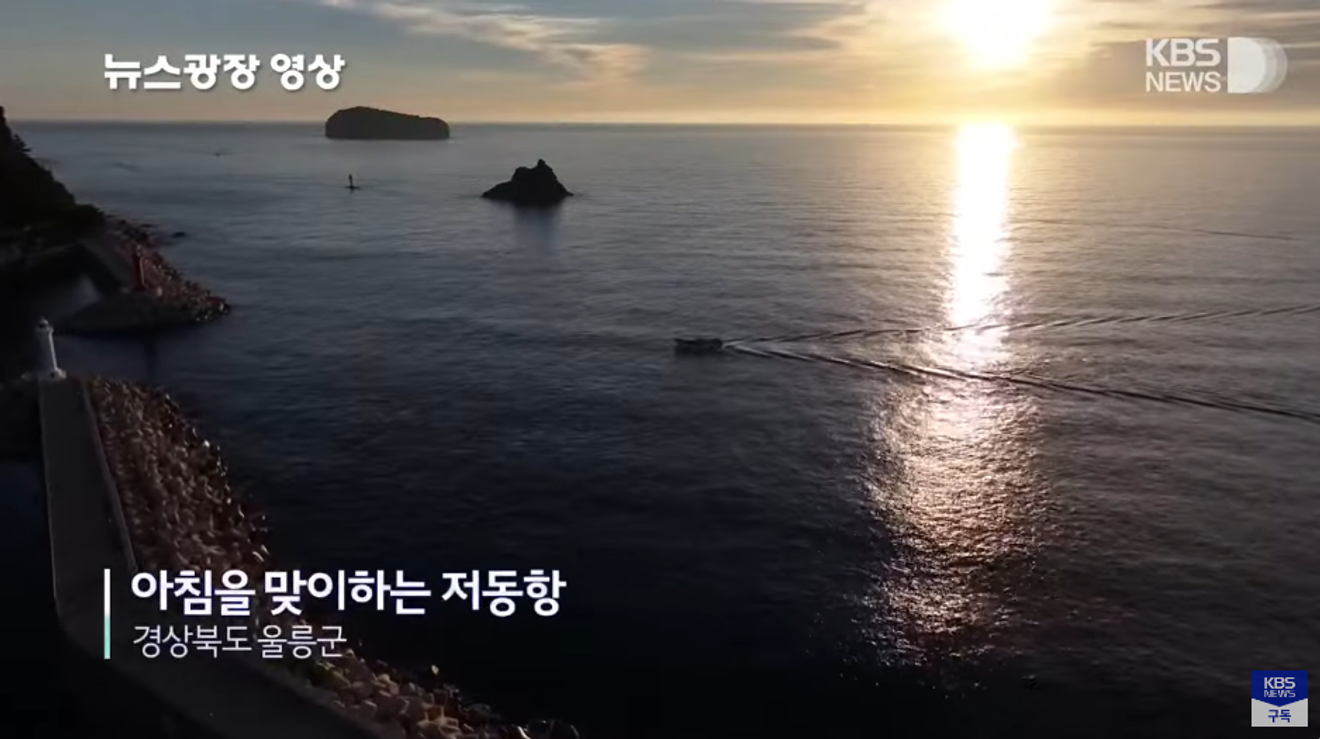
Source: KBS
Jeodong Port
The largest port in Ulleung-gun, it's where most of Ulleungdo's squid is handled.
As a fishing base, it has a fish market and is always bustling with activity.
"Jeodong's Fishing Lights" (Jeodong Eohwa), famous for the lights of squid fishing boats, is one of the Eight Scenic Views of Ulleungdo.
Chodaebawi Rock, located next to the port breakwater, is a legendary rock. It's said that a daughter living with her widowed father waited anxiously for her father who went out to sea and never returned,
and eventually turned into a rock. It's also called Hyonyeo Bawi (Filial Daughter Rock).
Jeodong got its name from the abundance of ramie plants that grew in the mudflats when the area was first developed. It was called "Mosicae" (meaning "mudflats with lots of ramie"),
and when it was transcribed into Chinese characters, the character for ramie (苧, jeo) was used, resulting in the name "Jeodong".
Comments0